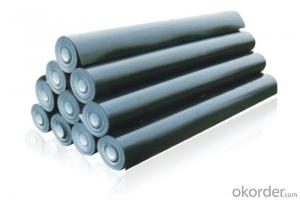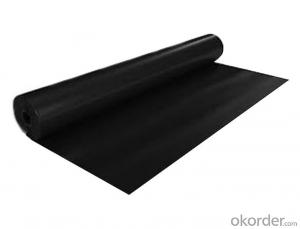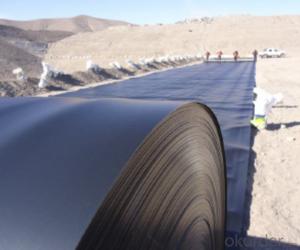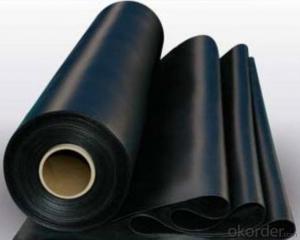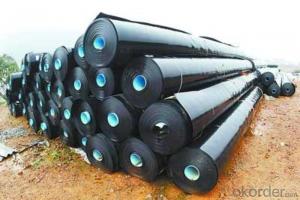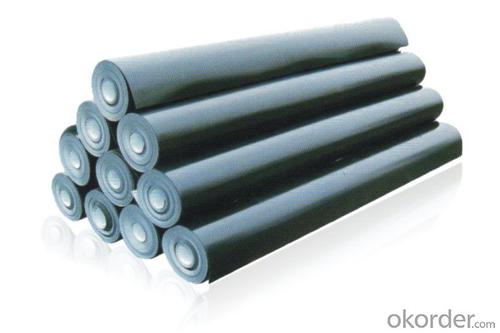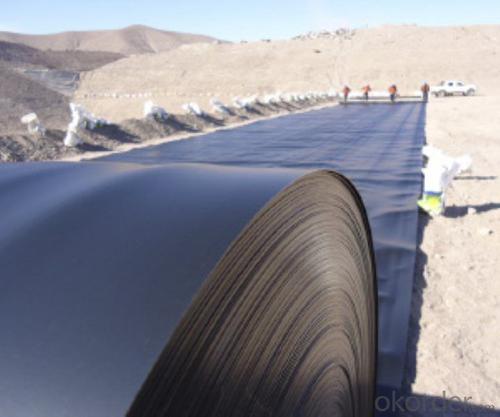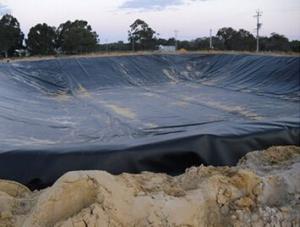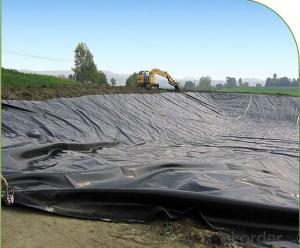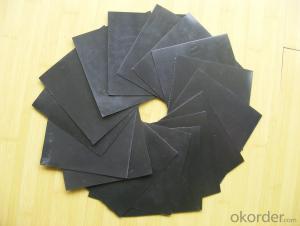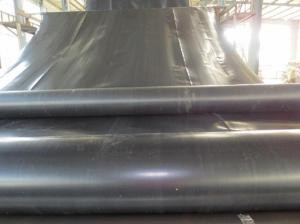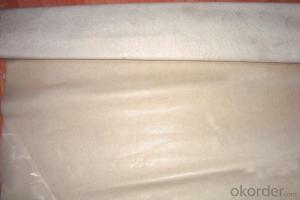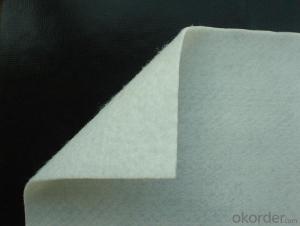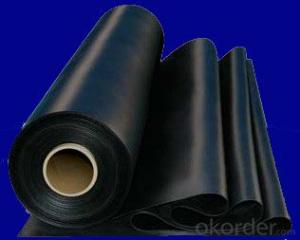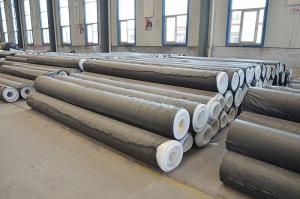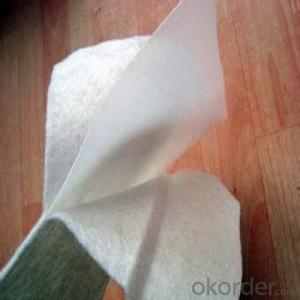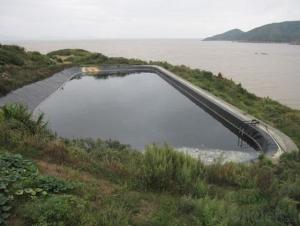Plastic Geomembrane - Geomembrane 0.6 mm HDPE Made in China
- Loading Port:
- Qingdao
- Payment Terms:
- TT OR LC
- Min Order Qty:
- 8000 m²
- Supply Capability:
- 100000 m²/month
OKorder Service Pledge
OKorder Financial Service
You Might Also Like
Geomembrana 0.8 mm of HDPE for The Tank Made in China
Description Of Geomembrana 0.8 mm of HDPE for The Tank Made in China
Geomembrane, water-proof plate, is made from polymer materials like polyethylene, through blow molding.
Main Features of Geomembrana 0.8 mm of HDPE for The Tank Made in China
Polyethylene (PE) geomembrane is divided into low-density polyethylene (LDPE) geomembrane
Applications of Geomembrana 0.8 mm of HDPE for The Tank Made in China
1. HDPE geomembrane's applications in municipal engineering: subway, underground works of the building, planting roof, roof garden, sewage pipe seepage control;
2. Polyethylene impermeable membrane is applicable to the garden: artificial lake, river, reservoir, golf course pond bottom, slope, green lawn waterproofing and damp-proofing
IMages of Geomembrana 0.5 mm of HDPE for The Dam Made in China
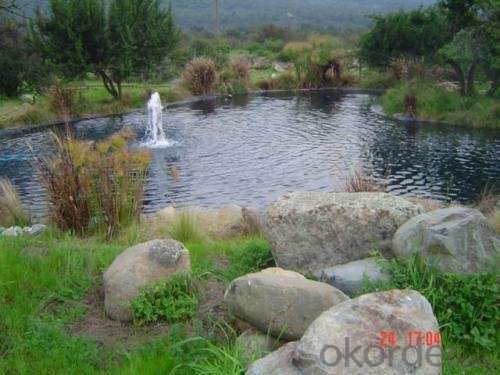
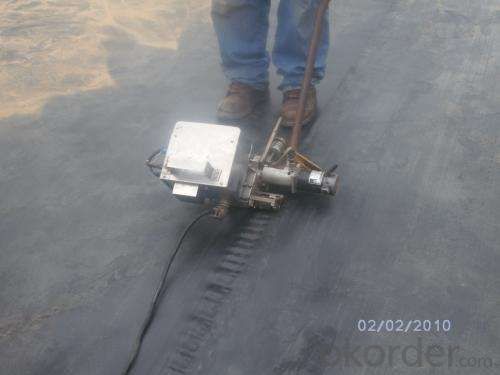
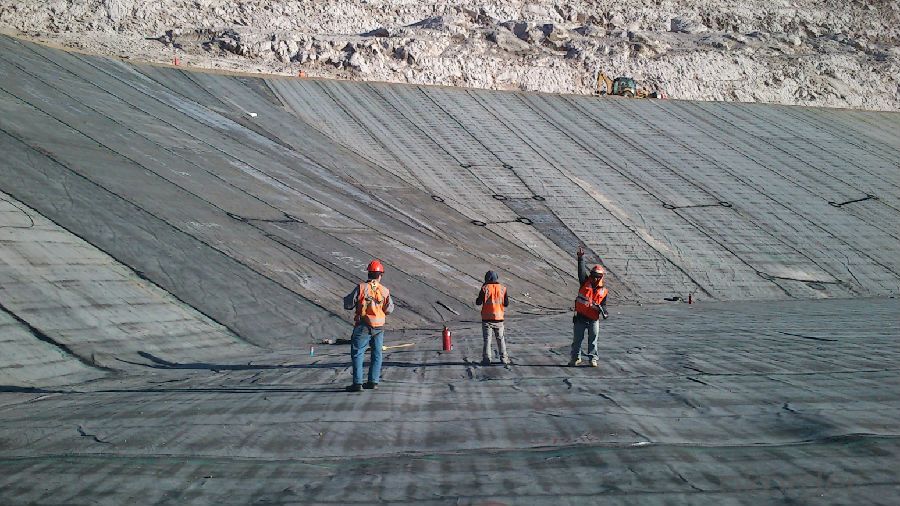
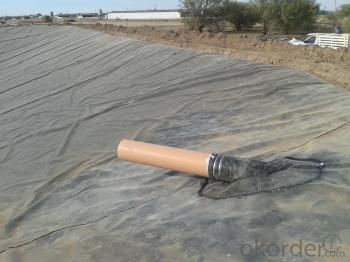

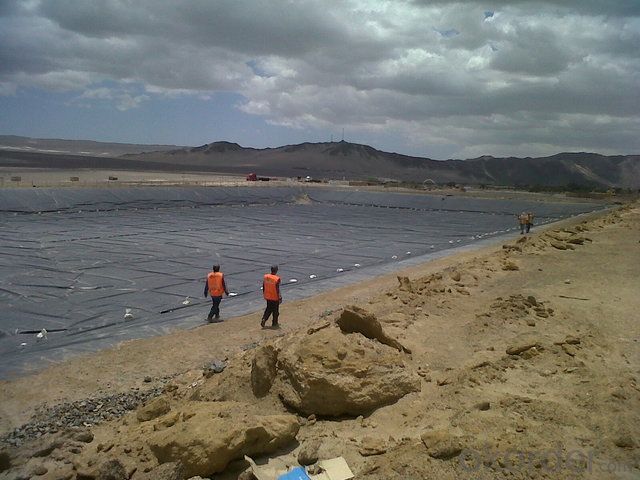

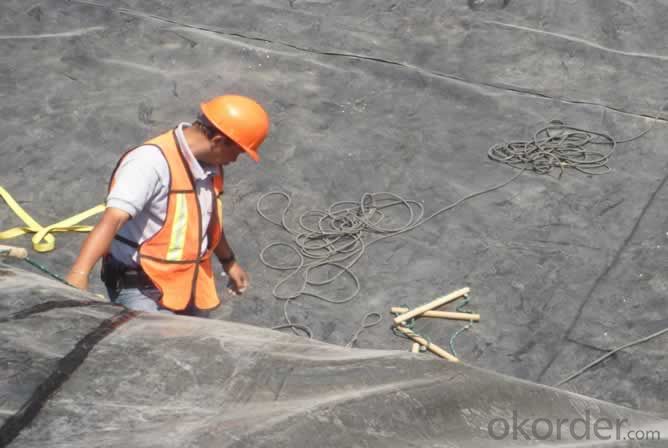
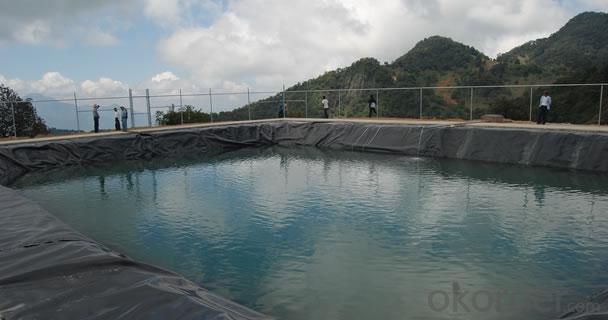
FAQ:
1. What are we supplying?
We are specialized in producing .geotextile , geocell, geogrid, geomembrane
2. How Many years experience do we have?
We have been exported to more than 15 countries in the past 10 years.
3. How long do we usually reply your request?
We always reply our customer within 12 hours.
- Q: What's the geotextile wrapping the temperature humidity sensor of standard curing room for?
- Waterproof cloth wrapping is usually adopted on high humidity occasions.
- Q: What are the most common applications for geomembranes?
- The most common applications for geomembranes include landfill liners, pond liners, mining and oil containment, wastewater treatment, and agricultural irrigation systems.
- Q: What are the permeability properties of geomembranes?
- Geomembranes are synthetic sheets or membranes that exhibit varying levels of permeability, depending on their composition and design. Generally, geomembranes have low permeability, making them highly effective barriers against the movement of liquids, gases, and other substances. However, the permeability properties of geomembranes can vary depending on factors such as thickness, material composition, and installation techniques. In some cases, geomembranes can be engineered to have specific permeability characteristics to accommodate specific applications, such as allowing controlled flow of liquids or gases. Ultimately, the permeability properties of geomembranes are designed to ensure effective containment and protection against potential leaks or contaminations.
- Q: How do geomembranes provide insulation in roofing systems?
- Geomembranes provide insulation in roofing systems by acting as a barrier that prevents heat transfer between the building and the outside environment. They are typically made of materials with low thermal conductivity, which reduces the amount of heat that can pass through the roof. This insulation property helps to maintain a stable indoor temperature, reducing the need for excessive heating or cooling and ultimately saving energy.
- Q: What are the benefits of using geomembranes in floating islands?
- There are several benefits of using geomembranes in floating islands. Firstly, geomembranes provide a durable and impermeable barrier that prevents the loss of water from the floating island, making it more sustainable for the plants and wildlife inhabiting it. Secondly, geomembranes help to prevent the growth of unwanted vegetation and invasive species, ensuring the ecological balance of the floating island. Additionally, geomembranes offer excellent chemical resistance, protecting the island from contaminants and pollutants. Finally, the use of geomembranes in floating islands allows for easy maintenance and repair, increasing their longevity and overall effectiveness in supporting healthy ecosystems.
- Q: How is the heating performance of the electrothermal?film?
- Generally speaking, the effect is good. One of its advantages is that it is heated fast, easy to control and not counted as floor height when installed. However, the heating effect is also related to the thermal insulation of the house and the installation of electric heating film.
- Q: What are the technical requirements of permeable geotextile of two fabrics and one membrane?
- These three kinds of materials all belong to the category of geo synthetic materials. According to whether there is a clear latitude and longitude lines, it is divided into non-woven fabric and spun (or woven) fabric. Under normal circumstances, we often use nonwoven geotextile to filter, making water penetrate. However, small soil particles can't penetrate. This method is often used on the back surface of the dam. Prevent water from carrying away the fine particles in soil, thus forming large permeability channel. Woven fabric is often used as reinforcement in the project to increase the strength of the soil in a certain direction. The apperance of geotechnical cloth, especially the appearance of non-woven fabrics is like ordinary cotton (not necessarily accurate). Colors are usually described as white. Also some impurities.
- Q: Function introduction of geomembrane welding machine
- 1. Electric heating system: The heating temperature of electric heating wedge adopt closed-loop temperature control for continuous adjustment weld via adjusting corresponding pressure position according to the material thickness 2. Welding pressure regulation system: for continuous adjustment 3. The transmission system : Using compression roller dual wheel synchronously drive power level variable speed control self-control system matches with tachogenerator to adjust welding speed and keep constant, which is affected by load change through three-level planetary gear reduction transmitting force to the pass / pressure roller
- Q: Are geomembranes resistant to groundwater contamination?
- Yes, geomembranes are generally resistant to groundwater contamination. They are designed to provide a barrier against the flow of liquids, including groundwater, preventing it from contaminating surrounding soil or water sources. However, it is important to note that the effectiveness of geomembranes in preventing groundwater contamination can vary depending on factors such as the type and quality of the geomembrane material, installation methods, and site-specific conditions. Regular inspection and maintenance are necessary to ensure their long-term effectiveness.
- Q: What are the potential risks associated with geomembrane installation and use?
- There are several potential risks associated with geomembrane installation and use. One major risk is improper installation, which can lead to leaks or tears in the geomembrane, compromising its effectiveness as a barrier. This can result in environmental contamination or structural damage to the project. Additionally, if the geomembrane is not properly anchored or secured, it can be displaced by strong winds or other external factors, leading to failure of the containment system. Another risk is the potential for degradation over time due to exposure to UV radiation, chemicals, or extreme temperatures, which can weaken the geomembrane and reduce its lifespan. Regular inspection and maintenance are necessary to identify and address any potential risks to ensure the proper functioning of geomembranes.
Send your message to us
Plastic Geomembrane - Geomembrane 0.6 mm HDPE Made in China
- Loading Port:
- Qingdao
- Payment Terms:
- TT OR LC
- Min Order Qty:
- 8000 m²
- Supply Capability:
- 100000 m²/month
OKorder Service Pledge
OKorder Financial Service
Similar products
Hot products
Hot Searches
Related keywords
